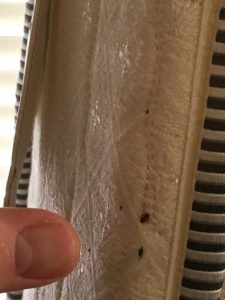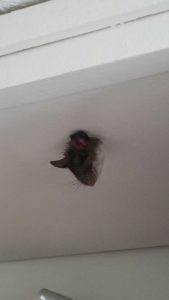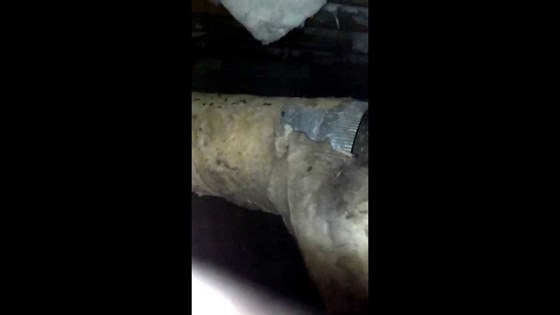Tuesday, November 1, 2016
How do you kill a yellow jacket nest?
How do I get rid of bed bugs myself?

Looking for bed bugs is similar to looking for fecal spots in that bed bugs often leave numerous fecal spots where they get together after feeding. Bedbug,Bed Bugs Getting Rid of,List of Pesticides to Control Bed Bugs,Home Remedies for Bed Bugs,Example Bed Bug Bite,Bed Bug Bite Symptoms,Treat Bed Bugs,Controlling Bed Bugs,Bed Bugs How Do They Spread,Images of Bed Bugs Bed Bug Extermination Cost,Pest Control Services Bed Bugs,Bed Bug Removal Services,Bug Control Services,Exterminators for Bed Bugs,Bed Bug Extermination Cost,Bed Bug Control Service seattle Bed Bug Pest Control Companies,Bed Bug Exterminators Near Me,Bed Bug Mattress Encasements,Bed Bug Exterminator Cost,Orkin Bed Bug Treatment,Bed Bug Cover,Spray for Bed Bug,Exterminator for Bed Bugs,Bed Bug Companies,Bed Bug Pest Control Companies,Bed Bugs Control Company,Bed Bug Heat Treatment Companies,Bug Extermination Companies,Bug Killer Companies
http://bit.ly/2f9NhIQ
What does a pest control company do?
To serve you better, we have compiled a list of pest control questions that our customers ask, and our expert answers.Commercial pest control,Commercial exterminators,Exterminators,Exterminator,Home Pest Control,Pest Control Seattle,Orkin Pest Control Prices,DIY Pest Control Supplies,pest control service,Eastside exterminators,Eastside pest control,pest exterminators,cost of pest control,the cost of exterminators,price of pest control,extermination prices,seattle exterminators,seattle pest control,bed bugs
http://bit.ly/2f9GP4A
Who is the best exterminator for ants?
http://bit.ly/2eaVmxN
Who do you call to get rid of moles in your yard?
How long does it take an exterminator to get rid of roaches?
http://bit.ly/2f9vS31
How does an exterminator get rid of mice?
Today, rats were seen running out of a known ravine, in the Eastside of Seattle. Searching for higher ground and food. Although there is no specific Season for rats the rodents will be on the move looking forshelter and food as the weather gets colder. The motorist thought what kindof rats are those. It didn’t take long before the rats found the perfect home to start nesting. Someone is going to need to know How to get Rid ofa Rat home Infestation in Bellevue.
Where rat sightings have been spotted More in the Greater Seattle area:It has been reported that Seattle has ranked number one for ratinfestations across the nation. Pretty scary thought. Pest Control businesses are being kept busy.
The wet and cooler Autumn weather has arrived in Seattle and this means spending more time in the home. Due tothe drop in temperature, Rats are determined to find homes to set upresidency and be near sources of food. Yep, the rats seen running out ofthe ravine, found new digs. It didn’t take the nasty rats long and hit the jackpot of accessible holes around the perimeter of the residence. The rats went immediately to the kitchen to find food. Which was available on counters, the floors and open garbage cans. It’s not true that rats only populate in filthy homes. The rodents will be wherever it can get in andfeed on whatever it finds. It’s like the rat pack sniffed out the few inthe house and came squirming through the holed to join the smorgasbord meal.
How in the world could a Rat fit through a quarter size holes:It may be hard to believe but the rats were able to weasel through a holethat was the size of a quarter. The rats are diligent hunters and will find accessible ports of entry to the domain. Rats will even swim through sewer lines and scurry up drain pipes which is another way to get inside. Rats and mice need to eat too and humans can provide the best all-you-can-eat buffets. The vermins are so thankful the entry points that made it so easy to bust into the house. Rats love grains and will dineon rice, cereal, pasta, crackers and bread. Just check for torn open items, crumbs and droppings left around. Rats don’t discriminate and will eat just about anything. Rats are truly some dirty slobs as the evidence of the feast is scattered everywhere.
Some of the dangers and damages caused by Rats and Mice:Gnawing can cause considerable damage to the contents of the home. Rodents love to chew on things such as wires, furniture and piping. In some cases because of the rodents gnawing on wires has started house fires. Obviously losing the home could be fatal and costly. The greatest threat mice and rats would be the disease and bacteria thatthese nasty pests carry. Airborne germs and bacteria from droppings and urine are High risk issues to people.
Why Bellevue home was invaded by Rats in the mind pest control:It was obvious after the homeowner noticed the mess on the counter as he got ready to prepare a snack. When investigating further he found feces, urine. By this time the resident could not even imagine taking on this bigheadache. It was overwhelming and stressful and all he wanted was to getrid of this rat Infestation. The choice was made to call in a Seattleprofessional Pest Control Exterminator that could exterminate the rats. Decision was to call AMPM Exterminators. AMPM EXTERMINATORS is a pest control company that will work with the customers and treat the clients with utmost respect. It is a requirement that all technicians be professional and listen to the customers to get all details of the issue.
This process begins by providing the most skilled and helpful technicians to the residence Technicians average 10+ years of experience, and are trained to work withthis type of rodent Infestation/Cleanup in Crawlspace and Attic. Is a Professional pest control company that provides exterminator services for a variety of Infestations. Such as Rat Control, bed bugs, little black Sugar ants, Pavement ants, Carpenter ants, mice, rodent control,birds, beetles, moths, Flies, Termites, Wasps, Yellowjackets and Hornets. AMPM Exterminators is a Pest control service that takes pride in familyand pet friendly effective pest control in King County areas of Seattle, Bellevue, Redmond, Kirkland, Renton, Everett, Bothell and Issaquah. BedBugs extermination services, Mouse Control, Rodent, Carpenter Ants, Sugar Ants, Pavement Ants and Spider control are available to Residences. Whichincludes single family residences. Also services available for Apartments, Commercial businesses such as hotels, restaurants, schools and industrialestablishments, warehouses and grocery stores.
Attic and Crawlspace Rodent Restoration including cleaning, sanitizing and insulation removal & repair after rats, mice, squirrels, birds, batsInfestation.
Find answers to questions about cost facts, information, and discover pest control tips. Each home is different and pest control and repair costs may vary. After years of experienced inspections, all clients deserve customized solutions for their pest problems.

Clean all open sources of food before leaving in the evening to remove overnight food sources for cockroaches and rodents. Mice removal,Mice control, mice exterminators,pest control,seattle exterminators,seattle pest control,Rodent control service,Mice droppings pick up service,rats exterminators
http://bit.ly/2eaV7mt
Friday, October 28, 2016
How do exterminators get rid of bed bugs?
Seattle Bed Bug Extermination Best Cheap Pest Control for Bed Bugs
http://bit.ly/2eWWjZm
Tuesday, October 25, 2016
How much is pest control for rats?
The most commonly found rat pest in seattle metro king county area is the Norway rat. Norway rats, sometimes called brown or sewer rats, are identifiable by their stocky, gray-brown bodies. Their tails are shorter than their body length and their ears and eyes are small relative to their body. Norway rats are larger than most other rat species. They burrow in gardens and fields, as well as beneath building foundations, trash or woodpiles. Norway rats line their nests with fibrous materials, such as shredded paper and cloth. These rats tend to inhabit the lower levels of buildings. Roof rats, sometimes called black rats, are superb climbers that tend to nest above ground. In the wild, roof rats inhabit shrubs, trees and dense vegetation. In domestic environments, they seek out secure, elevated places such as attics, walls, sheet rock ceilings and cabinets. They may enter homes through trees close to windows or eaves.
http://bit.ly/2esvRIJ
Friday, October 21, 2016
What does an exterminator do to get rid of rats?

Rats,Mice,Mouse,Rodents, control removal extermination
http://bit.ly/2eoLEZt
Thursday, October 20, 2016
How much does an exterminator cost for rats?
How much does an exterminator cost for rats?
http://bit.ly/2eaZH45
Friday, August 19, 2016
ABOUT HOW MUCH SHOULD A GOOD PEST CONTROL PROGRAM FOR A HOME HERE IN SEATTLE COST
The cost of Pest control service
http://bit.ly/2bzAzAt
- Some insects are wood-boring. They can damage your house’s structure and cost you tens of thousands of dollars in repair, or can make your home structurally unlivable.
- Stinging and biting insects can range from merely painful when they attack to literally deadly.
- Many household pests carry diseases such as salmonella (cockroaches) and Hantavirus (mice and rats).
- Even an insect as relatively harmless as a pincher bug will leave eggs and feces in your food.
- While you may know enough to avoid dangerous insects like black widows, scorpions, or fire ants, your children and pets may not.
One-Time Removal or Contract Services
- Monthly: Average $40.00 to $45.00
- Semi-Monthly: Average $50.00 to $60.00
- Quarterly: Average $100.00 to $300.00
Type of Pests
- Ants (especially the destructive carpenter ant)
- Bed bugs
- Cockroaches
- Beetles
- Centipedes (if you are allergic to bee stings, you are probably allergic to centipede bites as well)
- Crickets (more noisy than anything, they can still leave feces)
- Earwigs
- Flies
- Mice
- Moths
- Raccoons
- Rats
- Silverfish (though not poisonous, they can do severe damage to fabrics, books, and other such materials)
- Spiders (many spiders eat insects and avoid people, but their webs can trap a lot of dust and allergens)
- Squirrels
- Termites
- Weevils
- Woodlice
Getting of of pests in commercial business and homes
- Mice – A single female produces 5 to 10 litters per year. These litters consist of 5 to 6 young which are able to reproduce after a mere 30 days. So one month after giving birth, that 5 to 6 mice can become 2 to 70 mice. Now multiply that by one year and you get 100 to 1000 mice!
- Roaches – A female cockroach can produce 4 to 8 egg capsules in her lifetime. Each capsule can have 20 to 78 eggs in it for a reproduction rate of 120 to 384 eggs in a typical life span of 1 year. A roach reaches maturity in 30 to 225 days depending on temperature so in a little over a month you might see an increase of almost 3,500 roaches, or 10,000 in a year!
Damage Caused By Pests
- Mice – Mice can cause untold amounts of damage to your food. As well as eating it, their fecal material often finds its way into your grains and cereals. Like rats, mice leave a urine scent-trail everywhere they go. Many diseases are brought in by mice and rats such as salmonella, rabies, foot-and-mouth, and Hantavirus. They contaminate everything by leaving hairs as well as bodily waste, and where you have mice and rats, you have fleas. Mice also chew the insulation off of your electrical wiring. It is believed that 25% of all fires with an unknown origin were caused by mice and rats chewing on electrical insulation. The damage can range from a few dollars to replace your contaminated food to hundreds of thousands of dollars as your house burns, taking your worldly possessions with it.
- Carpenter Ants – Carpenter ants leave damage that the untrained eye can easily mistake for termites. To tell the difference, look at the tunnels, or “galleries”. A carpenter ant will leave a smooth, almost sanded appearance, while a termite’s gallery will be packed with mud-like substances and will be rough. Carpenter ants do not necessarily “eat” the wood, but they will carve away at damp wood and will grow and farm molds and other fungus for food. These galleries can significantly weaken the structure they are bored into. Once the structure has been weakened, a heavy snowfall, high winds, or other outside stress can cause the structure to collapse. These small insects can do thousands of dollars of damage, usually in the $2,000.00 to $17,000.00 range.
- Termites – Unlike carpenter ants, termites actually eat the wood. Like carpenter ants, termites can cause catastrophic amounts of damage. Termites cause an estimated $5 billion of damage each year. Keep your eyes open in early Spring for termite swarms. If you see them on your property, call an exterminator quickly. Otherwise you could be paying up to tens of thousands of dollars for repairs.